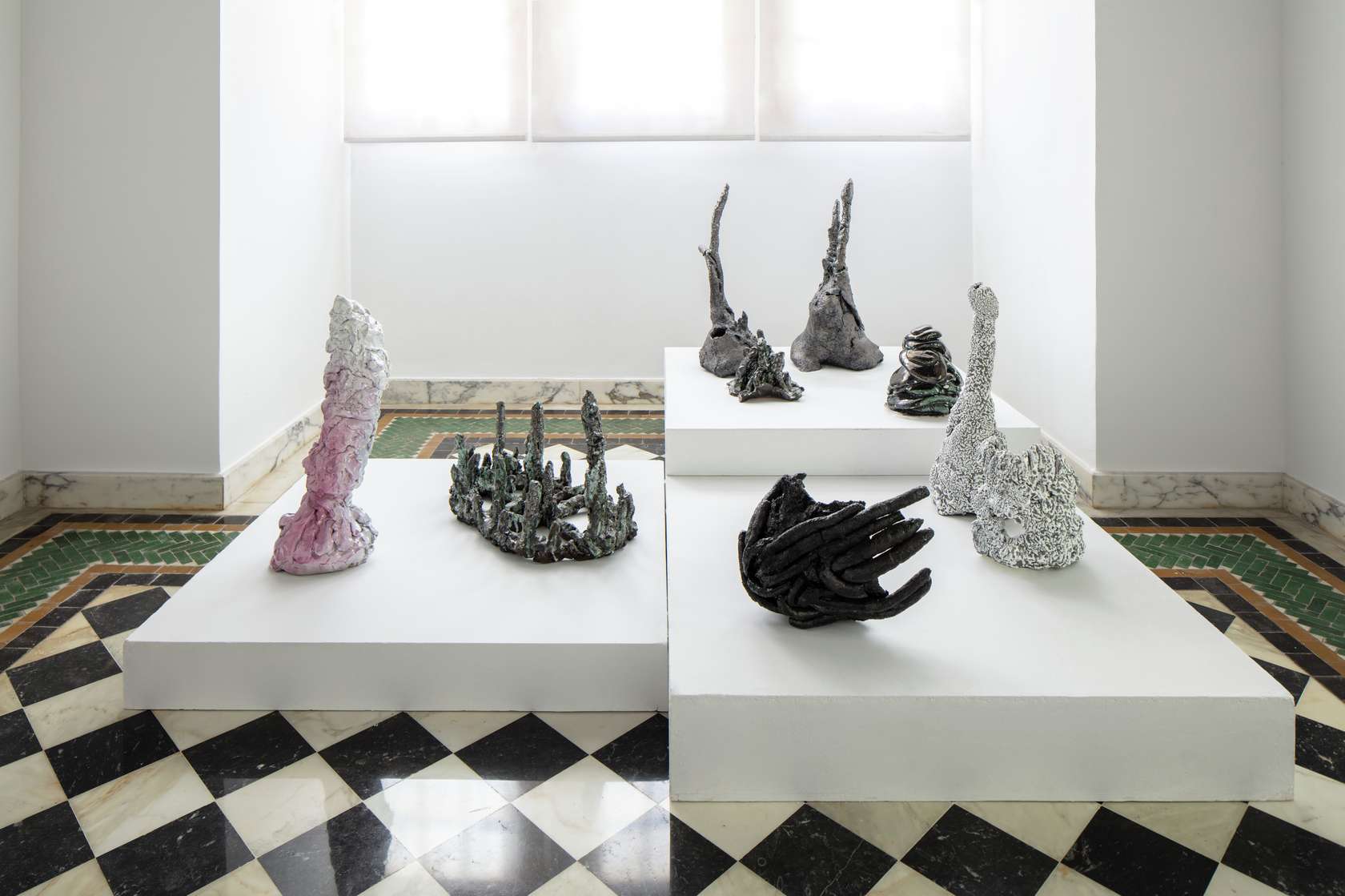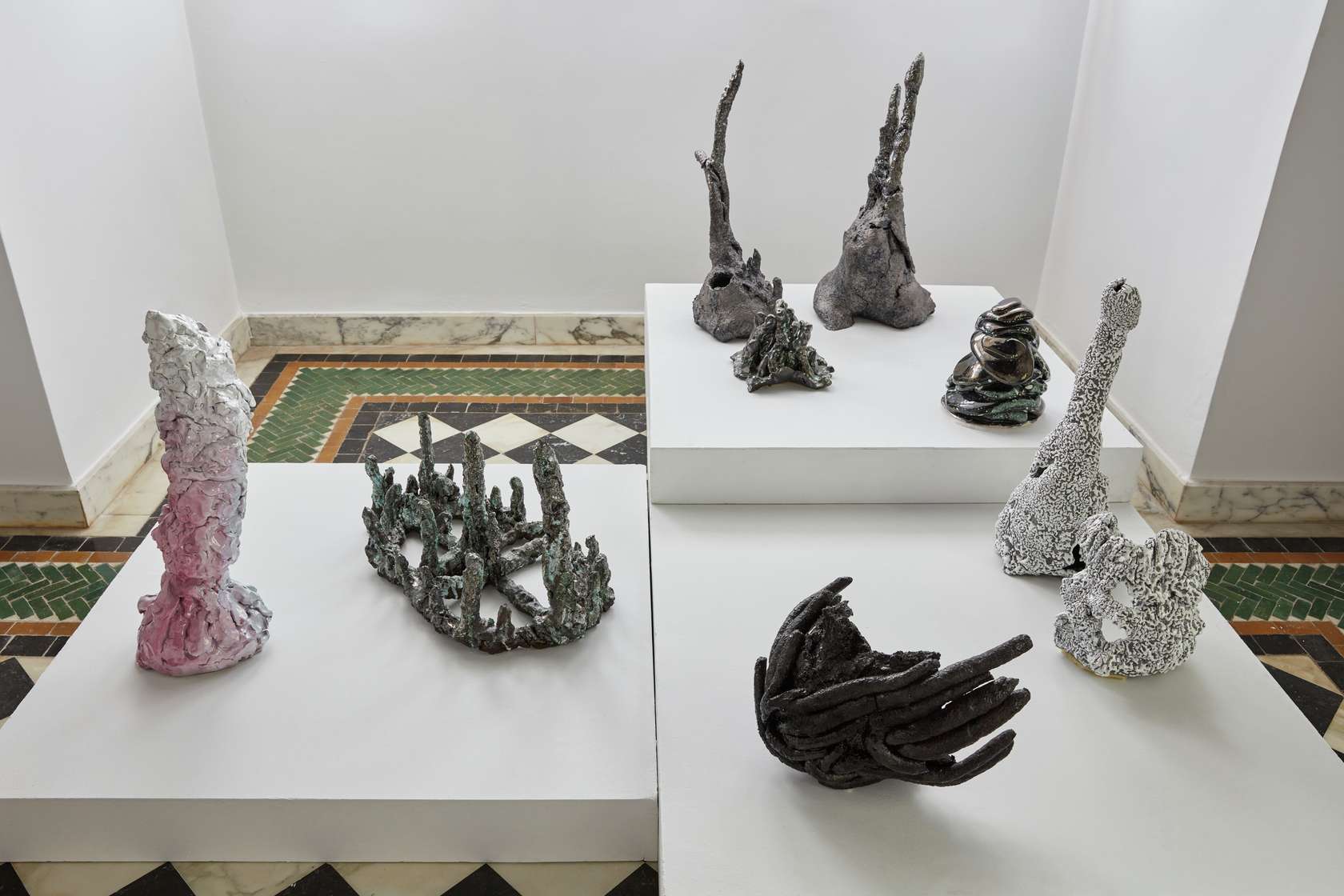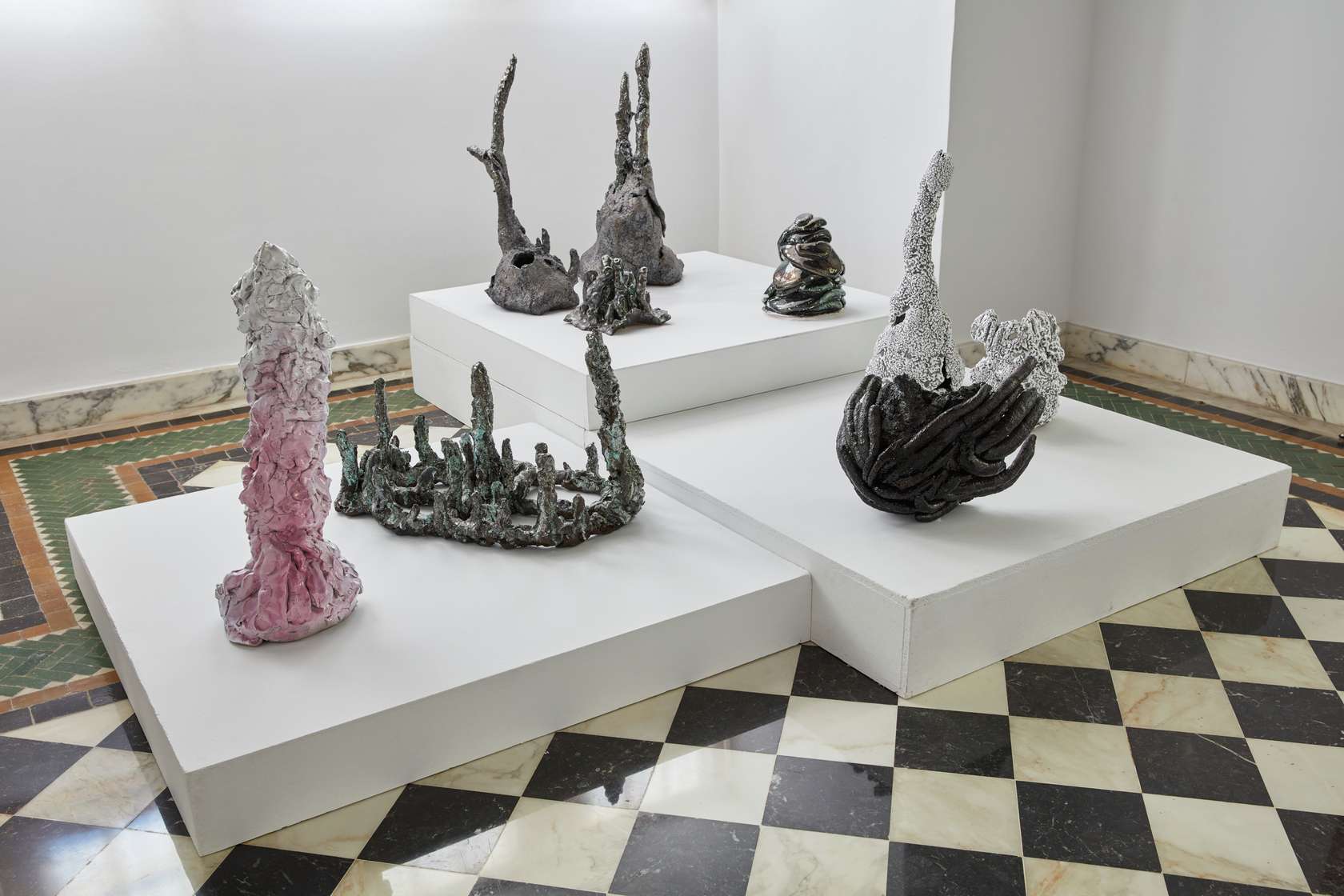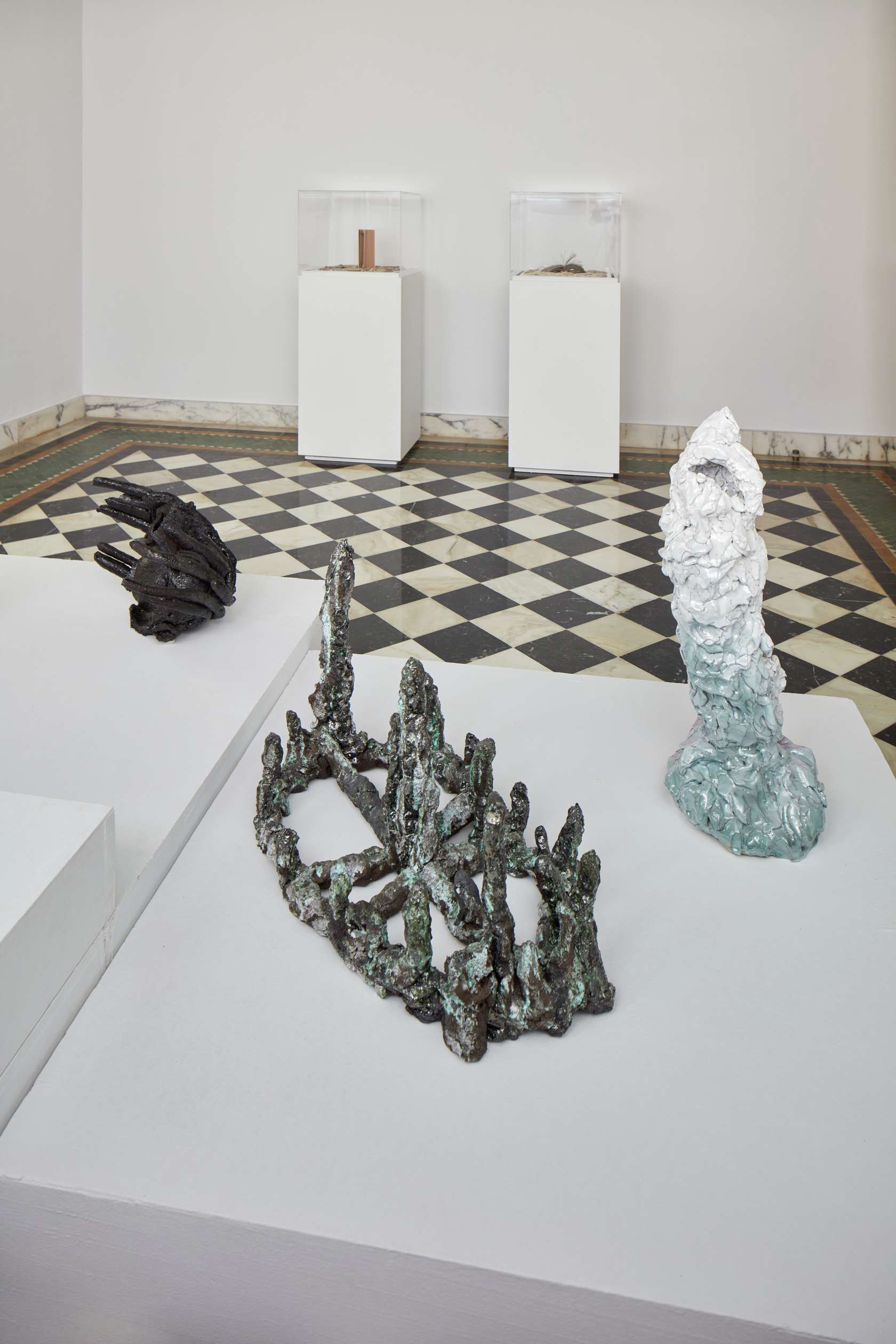-
 1/4
1/4
Salvatore Arancio , Classic Reloaded. Mediterranea
June 8th — October 30th, 2019
Villa des Arts, Rabat (MA) -
 2/4
2/4
Salvatore Arancio , Classic Reloaded. Mediterranea
June 8th — October 30th, 2019
Villa des Arts, Rabat (MA) -
 3/4
3/4
Salvatore Arancio , Classic Reloaded. Mediterranea
June 8th — October 30th, 2019
Villa des Arts, Rabat (MA) -
 4/4
4/4
Salvatore Arancio , Classic Reloaded. Mediterranea
June 8th — October 30th, 2019
Villa des Arts, Rabat (MA)
CLASSIC RELOADED. MEDITERRANEA
After the stops in Beirut and Tunis, the MAXXI collection concludes its Mediterranean journey at the Villa des Arts de Rabat
SALVATORE ARANCIO, MAURIZIO CATTELAN, ENZO CUCCHI, GINO DE DOMINICIS, BRUNA ESPOSITO, FLAVIO FAVELLI, MIMMO JODICE, SABRINA MEZZAQUI, LILIANA MORO, LUIGI ONTANI, PIETRO RUFFO, REMO SALVADORI, LUCA TREVISANI
Messenger works that open dialogue between people in an exhibition on the link between classical tradition and contemporary artistic research
Roma, 1st May, 2019. The Collection of MAXXI, National Museum of XXI Century Arts, is an ambassador of dialogue between peoples and an instrument of cultural diplomacy because even Art can establish bridges against closure and nationalism. For a year now, the CLASSIC RELOADED. MEDITERRANEA exhibit curated by Bartolomeo Pietromarchi, MAXXI Art director, together with Eleonora Farina, has brought along the Mediterranean a selection of works by Italian artists belonging to the Museum’s Collection.
The third and last stop of the traveling exhibit will be held from 8th June to 30th October 2019 at the Villa des Arts de Rabat, after having been hosted at Villa Audi – Mosaic Museum in Beirut and the Bardo National Museum in Tunis.
The project is part of the cultural program that MAECI created in 2018 in the countries of the Middle East and North Africa, Italia, Culture, Mediterraneo and, in Rabat, it is in collaboration with the Italian Embassy in Morocco and made available thanks to the Italian Cultural Insitute of Rabat.
CLASSIC RELOADED offers a reinterpretation and revitalization of a shared identity heritage, a cultural and artistic base from which it is possible to resume a dialogue, to facilitate that understanding among people that more than ever is needed, a real antidote to all fundamentalism. Through the 20 works by 13 Italian artists belonging to the Museum's Collection, the aim of the exhibit is to represent the culture of the “sea that lies between the lands”, the cultural autonomy but at the same time openness to the other, coexistence between peoples, relationship between local and global, which has always characterized the nations of the Mediterranean.
In Rabat, the works interact with the magnificent spaces of the Villa des Arts, a complex of art-deco pavilions built in the 1930s by Mustapha Alaoui and recently transformed into a center for contemporary art by the ONA Foundation.
The relationship with the city of Rabat and the culture of the Moroccan capital makes the mention of the Byzantine tradition of the Senza Titolo by Gino De Dominicis gold background or the ironic reference to the Roman mythology in Lapsus Lupus by Luigi Ontani even stronger. Remo Salvadori’s installation, La stanza dei verticali, with the sensual use of copper and the reference to the fundamental concepts of geometry, takes us back to classical architecture, while Bruna Esposito’s sculptures made of polychrome marble and bamboo brooms mix domestic and architectural dimensions.
Mimmo Jodice’s photographs re-read and revive sculptures, paintings, and mosaics from the classical era, while Flavio Favelli with the collage of carpets of different origins that composes Fiori Persiani, reproduces that culture of dialogue and encounter which is part of the Mediterranean identity.
Salvatore Arancio’s ceramics take us back to native folk traditions with archaic and mythological references, Sabrina Mezzaqui’s works refer to a thousand-year-old culture of the highest artisan quality, the practice of embroidery and cutwork, which interacts perfectly with the Moorish decorations.
An aniconic and ornamental aesthetics of Arab-Muslim matrix relates to Pietro Ruffo’s Icosaedro, while Luca Trevisani's compositions question the presence and absence, the fragility and the balance, pairs on which classical sculpture is based.
A work by Liliana Moro closes the itinerary. It is the sound of a bird’s chirping whistled by the very same artist, which is a counterpoint to the ornamental motifs of the Villa du Parc; next to this two works that take us back to the cult of the dead, to burials, to the hypogea: Mother, the buried fakir by Maurizio Cattelan and Porta addormita by Enzo Cucchi, a painting with clusters of skulls, works that capture our attention and lead us beyond the threshold.
An exhibition catalogue will be published at the end of the project, in the fall of 2019. The catalogue will be a collection of Agostino Osio’s (Alto Piano studio, Milan) photographs of the works set up in the three exhibition spaces of Villa Audi - Mosaic Museum in Beirut, Bardo National Museum in Tunis, and Villa des Arts de Rabat.